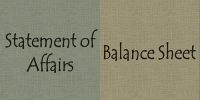Current assets are assets that a company expects to convert to cash or use up within one year or its operating cycle, whichever is longer. For most businesses the cutoff for classification as current assets is one year from the balance sheet date.
For example, accounts receivable are current assets because the company will collect them and convert them to cash within one year. Supplies are a current asset because the company expects to use it up in operations within one year. Some companies use a period longer than one year to classify assets and liabilities as current because they have an operating cycle longer than one year. The operating cycle of a company is the average time that it takes to purchase inventory, sell it on account, and then collect cash from customers. For most businesses this cycle takes less than a year, so they use a one-year cutoff. But, for some business, such as vineyards or airplane manufacturers, this period may be longer than a year. Except where noted, we will assume that companies use one year to determine whether an asset or liability is current or long-term.
Common types of current assets are (1) cash, (2) short-term investments, (3) receivables (notes receivable, accounts receivable, and interest receivable), (4) inventories, and (5) prepaid expenses (insurance and supplies). On the balance sheet, companies usually list these items in the order in which they expect to convert them into cash.













